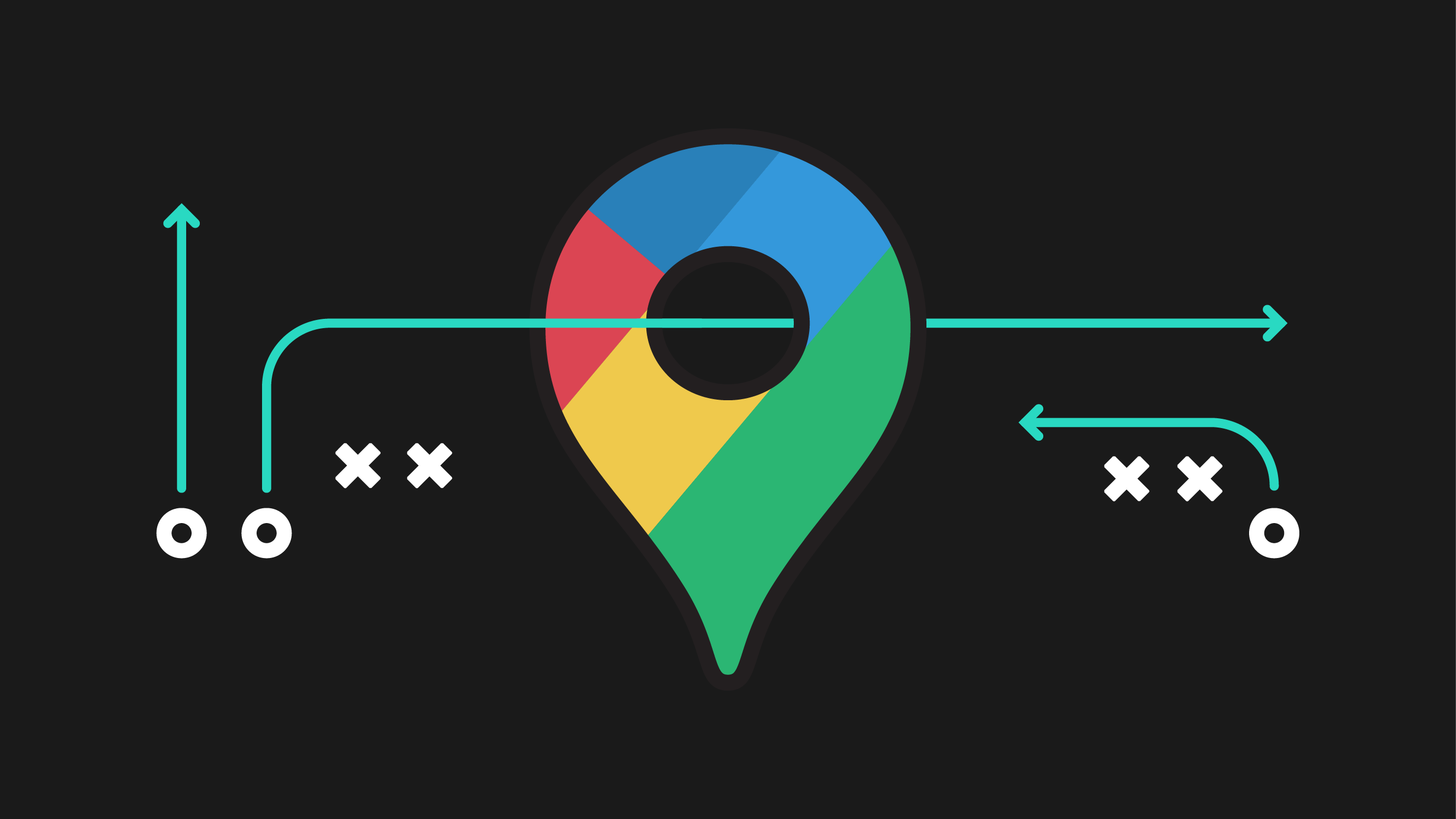Content is important for your business — whether you are a psychologist, restaurateur, plumber, or bike shop owner, your website content has a positive or adverse affect on how people perceive your business.
- Do you have detailed product/service pages? Explaining the benefits and features of what you offer shows your audience that you’re the right choice for them.
- Does your business have testimonials from clients? Another person’s recommendation is a lot stronger than your business claiming to be the best in the industry.
- Do you have an active blog? If your blog is inactive, your business looks stagnant, especially if your competitors are actively writing and sharing their knowledge and insight.
These are just a few examples of how content affects your business. To make your company’s website a compelling tool that proves your value, use these tips.
1. Define Your Content Goals
Before you start writing, you need to ask yourself, “what do I want the main outcome of this piece to be?” With a goal in mind, you can tailor your content to obtain that goal. Content without a goal becomes convoluted and incoherent, as it tries to do too many things at once.
So before you put that pen to paper (or hand to keyboard), set a goal! Do you want people to contact you about a service? Do you want to sell a product? Or do you want to increase brand awareness? These are just a few examples — whatever your goal is, note it down and keep it in mind as you write.
Note: The goal of this post is to get small-medium sized business owners and non-profit organizations excited about the potential content has when you follow these steps.
2. Identify Your Target Audience
You have a goal for the content, but who is the content going to speak to? Hint: there is a wrong answer. If you said ‘everyone’, think again! Your message won’t resonate with every single person — you want to choose an audience (or a persona) that you want to target, and speak to them specifically.
Once you’ve established who you want to speak to, writing will be a lot easier because you’ll know their motivations, pain points, needs, and interests.
3. Use Your Brand Voice
Whether you have a marketing team that writes content, or frontline staff that are interested in contributing their knowledge and expertise, it’s important that everyone who writes content for your business sounds like your brand. Even if only one person on your team creates content, it’s important to establish a brand voice so each piece sounds consistent, and also because your brand voice may differ from how they normally sound when they write.
Writing in a consistent brand voice also establishes familiarity and trust with your readers — if they feel like they know you, you’re one step closer to earning their business.
Imagine reading one section of company’s website that was written in a fun and energetic voice, and then reading another section sounds corporate and cold. This will confuse visitors and make them second guess who you are as a company.
To establish a brand voice, think about who you are. What are your brand values? Who are your customers? What does your company strive to be? This can help you answer whether you brand voice should be fun and informal, or smart and professional, for example. It’s also important to think about how you don’t want to sound.
MailChimp has a great example of this on their Content Style Guide. They’re helpful but not overbearing, and confident but not cocky — identifying how you don’t want to sound further defines what you should sound like.
Brand voice is often ignored by many businesses! Having a consistent brand voice can separate you from your competition — do not skip this step.
4. Create Original Content
Creating original and thoughtful content is important. Don’t take shortcuts when creating content — remember, great content takes time.
When creating content:
- Don’t copy/paste content from other sites or sources. (But you can link out to other sources!)
- Don’t look at your competitors websites and think, “I need to do that.” Instead, think, “I need to do better than that.”
- Don’t talk down to your audience.
- Don’t use stock photos that look staged and disingenuous.
Instead, do:
- Highlight what separates you from the competition — do so without saying “we’re unique” or “we’re different because…”.
- Collaborate with experts on your team, or have them write for you.
- Conduct your own original research to create unique content if you have the time and resources.
- Create your own illustrations or take your own photos.
Join our newsletter!
Get started on your journey to being a better marketer by joining our newsletter and staying up to date on important developments in analytics, SEO, and digital marketing.
5. Anticipate Your Audience’s Questions
Anticipating your audience’s questions will show that you understand their needs and pain points. By providing answers before they have to ask, you’re removing a barrier that is preventing them from taking action on your site.
The most obvious example of when you’ll answer your audience’s questions is on an FAQ page. FAQ pages are developed to answer repeat questions that come up time and time again, and because they’re common, people look for them. That doesn’t mean your business has to have an FAQ page — you may be able to answer their questions succinctly elsewhere on your site.
Other common places where you’ll answer your audience’s questions are on your about page, in case studies, and on individual product or service pages. Below are a few examples of how these types of pages can answer your audience’s questions:
- About Page — How long has the company been in business? What are their core values? Where is the company based? What’s their story?
- Case Studies — Does the company have proven results for their clients? What types of companies have they worked with?
- Product Pages — How much does it cost? What’s the quality like? How do I use the product? How will the product fit? What do other people have to say about this product?
- Service Pages — What is the service? How can the service help me? How much does the service cost? How are you better than the competition?
Understanding your audience’s needs and pain points is crucial — if you don’t know your audience (as discussed in point two), you won’t be able to anticipate their questions.
6. Write With SEO In Mind
Search Engine Optimization (SEO) will help get your content in front of people searching on Google or Bing. For example, someone searching for “signs you need to call an electrician” will come across multiple posts on the topic written by electrical service companies.
Rand Fishkin’s Whiteboard Friday outlines how to write for SEO in 2018. To do so:
- Solve the searcher’s query.
- Include multiple keywords that have the same intent.
- Include the keywords in the title tag and the body content.
- Bonus: Use heading tags (h1, h2), include the keyword in the URL field, write a compelling meta description, and include image alt attributes.
- Use words, phrases, and concepts that are commonly associated with your query.
Keep these points in mind, and you’ll be well on your way to writing content for SEO. (But don’t forget to put your audience first when writing!) Rand’s last point is something you don’t have complete control over — engagement. By answering your audience’s question and keeping them engaged with your site, you’ll show Google that your content has fulfilled the user’s query. If they hit the back button right away, Google will think that you haven’t answered their question, and may change how they rank your page on the topic.
7. Write Until Your Point is Made
Medium conducted a study which showed that 7 minutes is the average read time for their blog posts. (Medium estimates read time using the average reading speed of 275 words per minute, meaning that a 7 minute blog post is about 1,925 words long.) Does that mean every blog post you write should only take 7 minutes to read? No! Medium concluded their study by saying,
“What it does mean is that it’s worth writing however much you really need. Don’t feel constrained by presumed short attention spans. If you put in the effort, so will your audience.”
The main takeaway here is: there is no optimal length for content. Whether it’s content on your about page, a service page, or a blog post, write until your point is made! It’s important to get your main point across while also being clear and concise. Which brings us to our next point…
8. Make Your Content Look Good
You can put a ton of time and effort into great content, but if it isn’t easy for your audience to read, you’ve wasted your time. Here are a few examples of things you can do to make your content look good:
- Add images to provide visual interest and break up large sections of text.
- Use subheadings to separate your content into sections — this makes it easier for your audience to pick out what they want to read.
- Use an appropriate font size and line length, to make your content easy to read.
- Make use of different formatting, such as bullet points for lists and bold text or block quotes to highlight key points.
Make your content look attractive! Visitors to your website won’t read your content if there is no visual interest, it’s hard to read, or it’s formatted poorly.
9. Include a Call to Action
Most of the content you create will be actionable, so be sure to include a call-to-action. Steer your audience in the right direction. Do you want people to:
- Contact you?
- Sign up for your newsletter?
- Buy your product?
- Book an appointment?
- Sign up for a free trial?
Avoid using ‘submit’ as your call-to-action — be clear about the action you want your audience to take. Examples of clear call-to-actions include:
- Get in Touch
- Subscribe
- Buy Now
- Book Your Appointment
- Get My Free Trial
- Download our “Email Newsletter” Whitepaper (sometimes long buttons work great!)
For more information about creating effective CTAs, we recommend reading Joanna Wiebe’s blog.
Final Thoughts
Are you ready to improve the content on your website? Get organized! Create a content calendar to keep track of your content creation efforts — use it to assign responsibilities and set deadlines so content doesn’t get put on the back burner.
Once you have created great content that you want to get in front of your audience (blog posts, articles, infographics, etc.), promote it! You can have the best content in the world, but if you don’t distribute your content, no one will see it.
Sometimes less is more. Sometimes more is more! Research about who your audience is and an analysis of how people interact with your website can be very helpful in guiding your content process.




